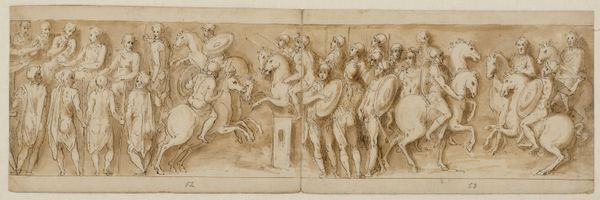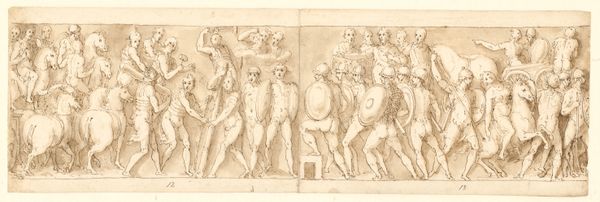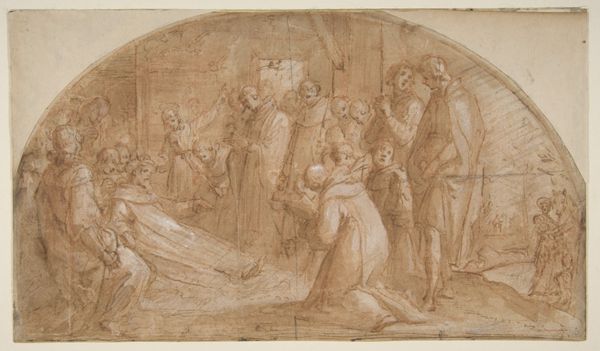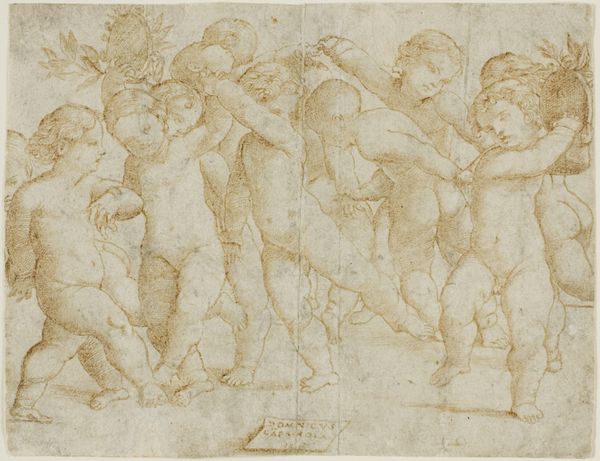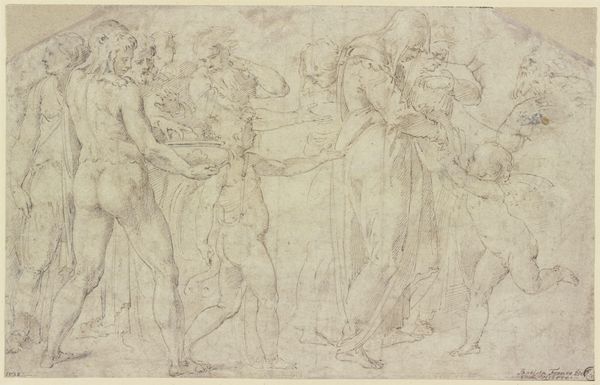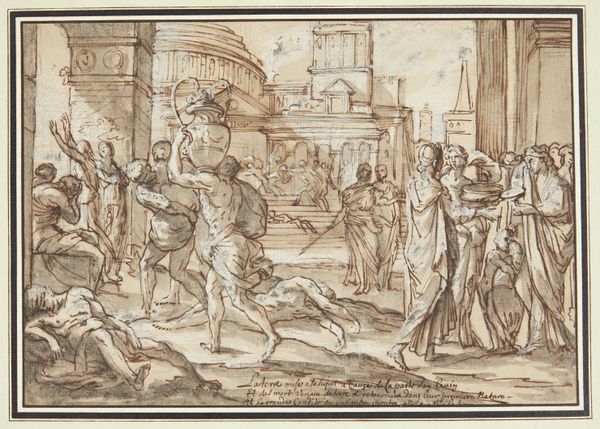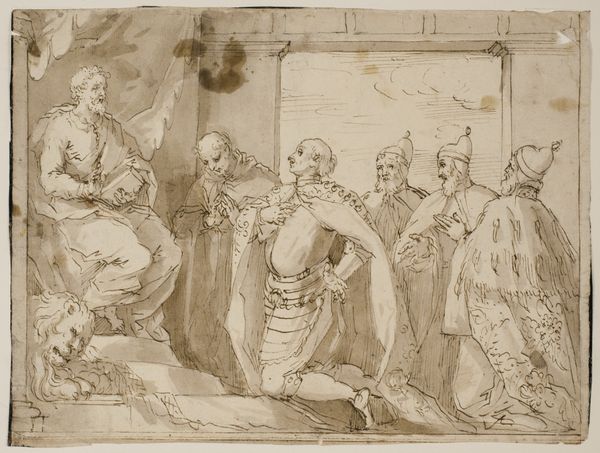
Romans on the march (XXXVI); Marcus Aurelius, Pompeius and an attendant watch the march (XXXVII); a halt on the march (XXXVIII) 1544 - 1618
0:00
0:00
drawing, ink, pen
#
drawing
#
figuration
#
11_renaissance
#
ink
#
pen
#
history-painting
#
academic-art
Dimensions: 133 mm (height) x 432 mm (width) (bladmaal)
Editor: We are looking at "Romans on the March" by Giovanni Guerra, created sometime between 1544 and 1618. It's a pen and ink drawing that depicts a procession of Roman soldiers. There's a sense of classical grandeur, but also a brutal, almost relentless energy in the marching figures. What do you see in this work, particularly regarding its historical context? Curator: The march becomes not just a visual representation, but a symbolic embodiment of power dynamics. Consider the academic style Guerra employs; it isn’t simply about aesthetic choices. Academic art, historically, served to legitimize certain power structures by idealizing historical narratives. How does Guerra’s portrayal of Roman power reinforce, or perhaps subtly question, the political climate of his own time? Editor: So you're saying this isn't just a historical snapshot, but also a commentary on power in Guerra's contemporary society? It makes you wonder who those leaders being carried on litters really are...and who is left out. Curator: Precisely. And look at the drawing's medium. Pen and ink allow for incredible detail, but also stark contrasts. Who gets depicted with meticulous care, and who fades into the background? Even the use of "academic art" principles – idealised forms and a classical theme – should be seen through the lens of what and who this idealisation serves. Does it present a straightforward narrative of heroism, or are there ambiguities we should question? Think about how even depictions of historical events carry ideological weight. What underlying messages about civilization, progress, and domination are communicated through images like these? Editor: That gives me a lot to think about. It challenges me to look at historical art with a more critical eye, considering whose stories are told, and whose are not. I now want to explore his other drawings. Curator: Excellent! That critical perspective is exactly what's needed when engaging with art history. Remember, art is rarely just about aesthetics, it's deeply entwined with power, identity, and the ever-evolving social landscape.
Comments
No comments
Be the first to comment and join the conversation on the ultimate creative platform.
